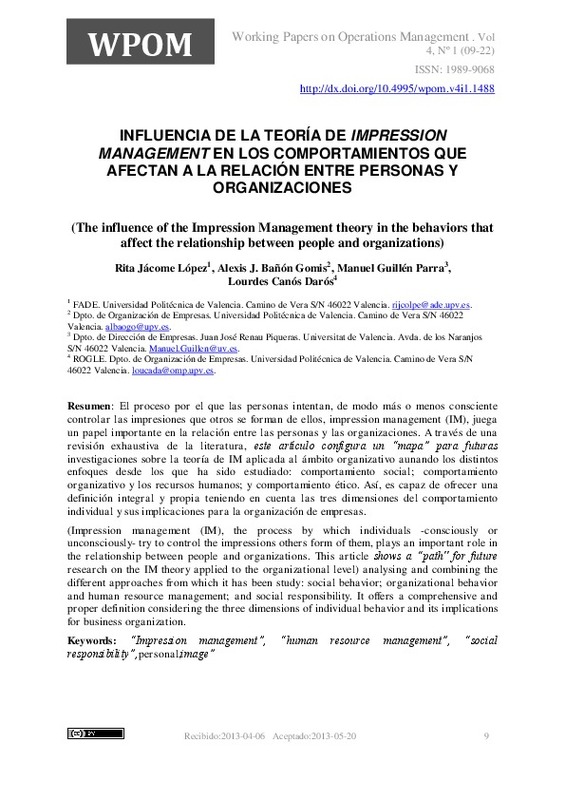JavaScript is disabled for your browser. Some features of this site may not work without it.
Buscar en RiuNet
Listar
Mi cuenta
Estadísticas
Ayuda RiuNet
Admin. UPV
Desde el lunes 3 y hasta el jueves 20 de marzo, RiuNet funcionará en modo de solo lectura a causa de su actualización a una nueva versión.
Influencia de la teoría de Impression Management en los comportamientos que afectan a la relación entre personas y organizaciones
Mostrar el registro completo del ítem
Jácome López, R.; Bañón Gomis, AJ.; Guillen Parra, M.; Canós Darós, L. (2013). Influencia de la teoría de Impression Management en los comportamientos que afectan a la relación entre personas y organizaciones. Working Papers on Operations Management. 4(1):9-22. https://doi.org/10.4995/wpom.v4i1.1488
Por favor, use este identificador para citar o enlazar este ítem: http://hdl.handle.net/10251/32061
Ficheros en el ítem
Metadatos del ítem
| Título: | Influencia de la teoría de Impression Management en los comportamientos que afectan a la relación entre personas y organizaciones | |
| Otro titulo: |
|
|
| Autor: | Jácome López, Rita Guillen Parra, Manuel | |
| Entidad UPV: |
|
|
| Fecha difusión: |
|
|
| Resumen: |
[EN] Impression management (IM), the process by which individuals -consciously or unconsciously- try to control the impressions others form of them, plays an important role in the relationship between people and organizations. ...[+]
[ES] El proceso por el que las personas intentan, de modo más o menos consciente controlar las impresiones que otros se forman de ellos, impression management (IM), juega un papel importante en la relación entre las personas ...[+]
|
|
| Palabras clave: |
|
|
| Derechos de uso: | Reserva de todos los derechos | |
| Fuente: |
|
|
| DOI: |
|
|
| Editorial: |
|
|
| Versión del editor: | https://doi.org/10.4995/wpom.v4i1.1488 | |
| Código del Proyecto: |
|
|
| Agradecimientos: |
|
|
| Tipo: |
|









